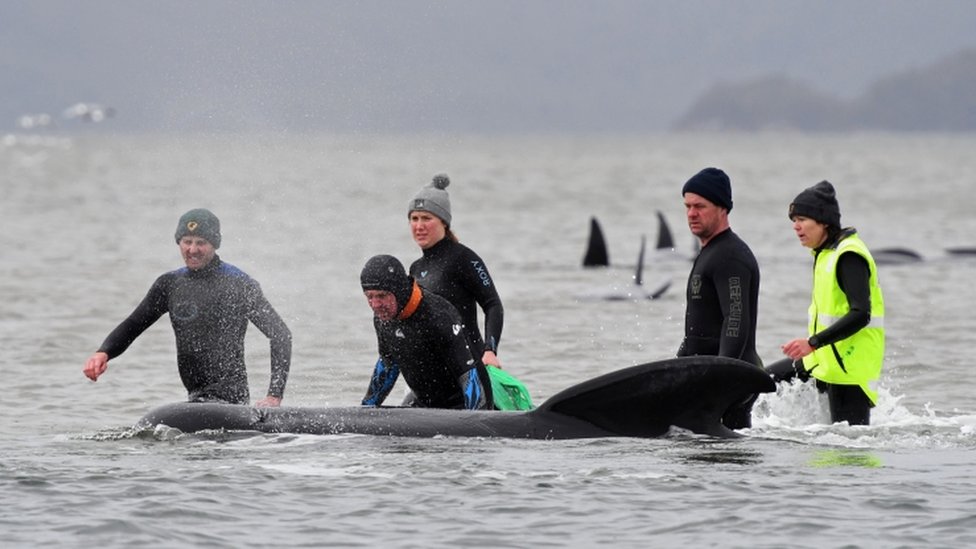A total of 108 surviving pilot whales have been released back into the sea after a mass stranding in Australia, marine experts say.
They believe Macquarie Harbour on Tasmania’s west coast is now clear of live whales.
But about 350 whales died in what is Australia’s worst stranding on record.
Now attention has turned to disposal of the carcasses, with 15 buried at sea on Friday in a trial to test the success of that method.
A statement released by the Tasmanian government on Saturday confirmed that 108 long-finned pilot whales which had survived the stranding had been released outside the heads at Macquarie Harbour.
Marine Conservation Program wildlife biologist Dr Kris Carlyon called it a fantastic outcome after five days of hard work by the rescue team.
“We only had one whale restrand overnight, which is a good result given 20 whales were released yesterday,” Dr Carlyon said.
At least four whales had to be euthanised earlier in the week as they were too exhausted to be saved.
Efforts are now being made to remove the carcasses from the harbour. This would take a number of days and depend on wind, tide and other conditions, said the government statement.

image copyrightReuters
“Yesterday, 15 whales were buried at sea in a trial to determine the success of this disposal method,” Rob Buck, Incident Controller and Parks and Wildlife Service (PWS) manager, said.
“Collection and disposal is being undertaken with the assistance of aquaculture companies whose equipment and expertise on the harbour is essential for a timely and effective outcome.”
Local residents have been urged to stay away from the area while the removal is under way.
How did the whales get stranded?
The pilot whales washed up on sand spits in the sea around Macquarie Heads on Monday.
The first rescuers counted about 270 whales, but a helicopter on Tuesday spotted another 200 whales nearby. Officials said the second group was believed to be part of the same pod but might have washed in with the tide.
More than 80% of Australian whale strandings take place in Tasmania and experts say Macquarie Heads is a known hotspot.
The stranding was one of the largest ever recorded globally and eclipsed a previous national record of 320 whales beached in Western Australia in 1996.
There are a range of theories for why beachings occur. Some experts say the animals can become disoriented after following fish they hunt to the shore.
Others believe that one individual can mistakenly lead whole groups to shore.
Researchers also believe that such groups are susceptible around beaches which gently slope across a wide area because the whales’ sonar pulses can fail to detect the shoreline in shallow waters.
Related Topics
-
Tasmania
- Whales
- Australia
